As part of the mechanical and chemical filtration of a reef aquarium, a skimmer is probably the most crucial of them all. In essence a skimmer is a mechanical device that removes dissolved organic compounds (DOCs), plankton, detritus, minerals and some bacteria from the water column by introducing millions of tiny bubbles into the water column. These bubbles provide an air-water surface area to which certain organic molecules are attracted to due to them having a polar and and a non-polar end, the polar end is attracted to water molecules and the non-polar end is attracted to the surface area of the bubbles. By collecting the foam that forms, these organic molecules are removed from the water column. Detritus and some other particles are mechanically attracted to this sticky foam and hence also removed.
In my 90g v2.0 tank I use a BubbleKing Mini 200 skimmer. At the top is the collection cup where the foam overflows in to. Every week or so I clean the cup as it fills with foam, also called skimmate. Some people have performed an in depth analysis of the elemental composition of skimmate. However very few people seem to look at the microscopic life that might reside inside skimmate. Hopefully this article will change that.
Once again, these photos are not award winning exhibits. They are merely to document what I found in some skimmate inside the skimmer. If I misidentified anything or for any unidentified organisms, please contact me and let me know.
Algae / Diatoms
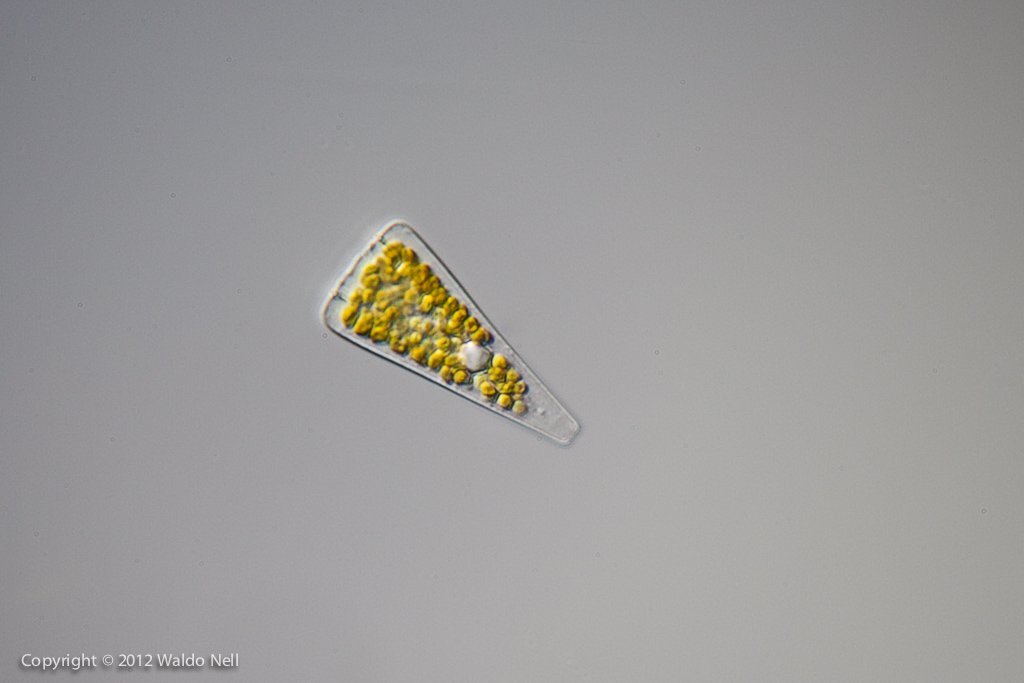
Diatom 40x * 2, DIC
Tiny diatom
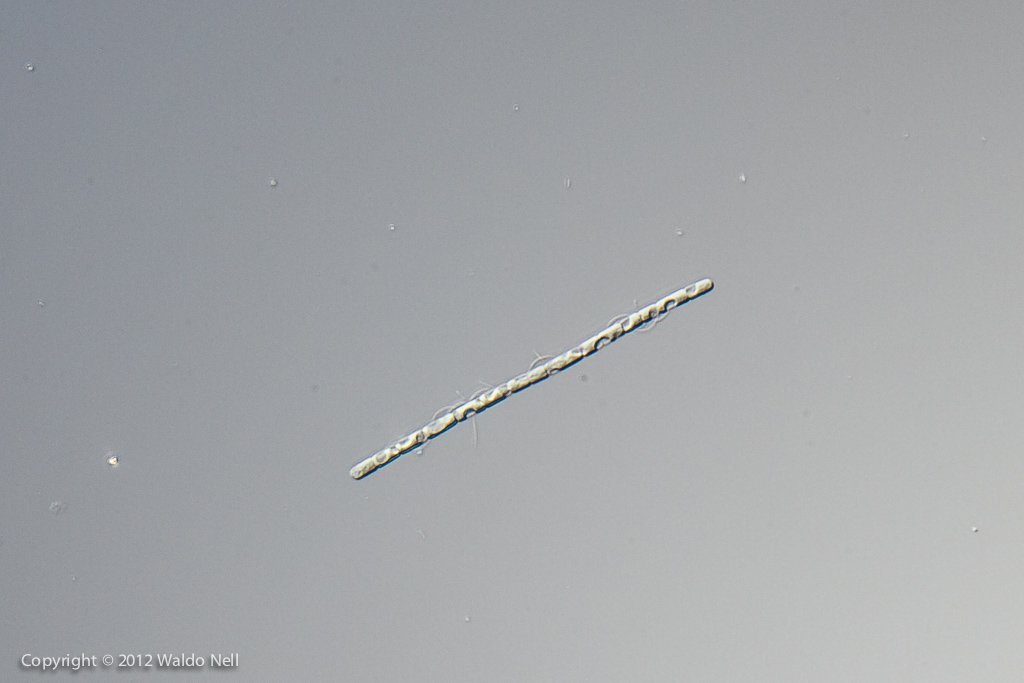
Diatom (?) 40x, DIC
This looks like a diatom but not 100% sure as it has cilia.
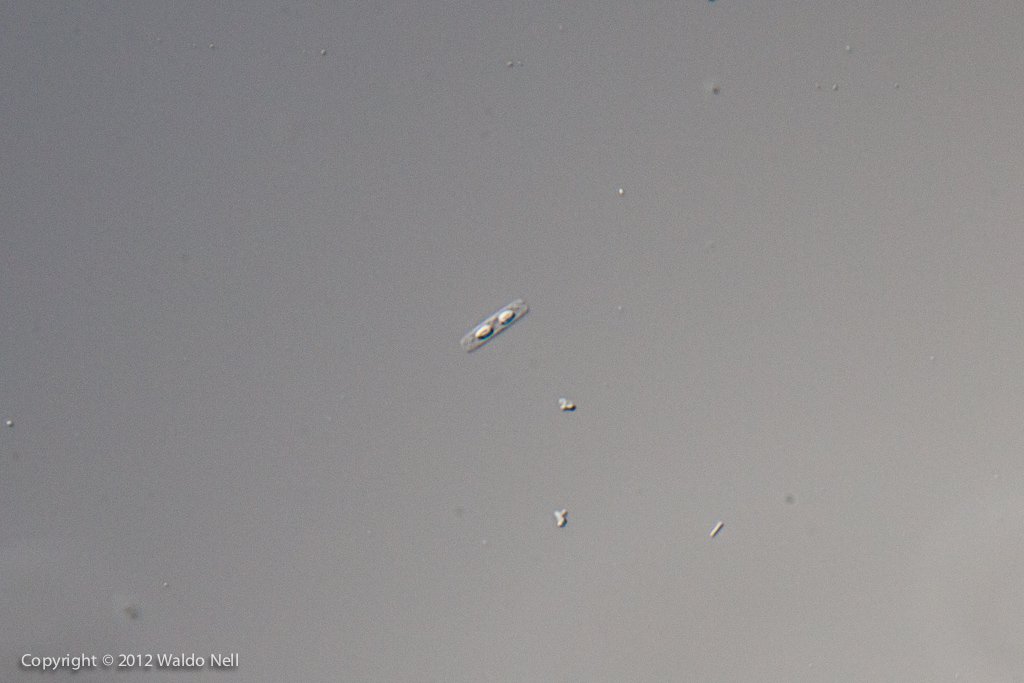
Diatom 40x DIC
Very tiny diatom.
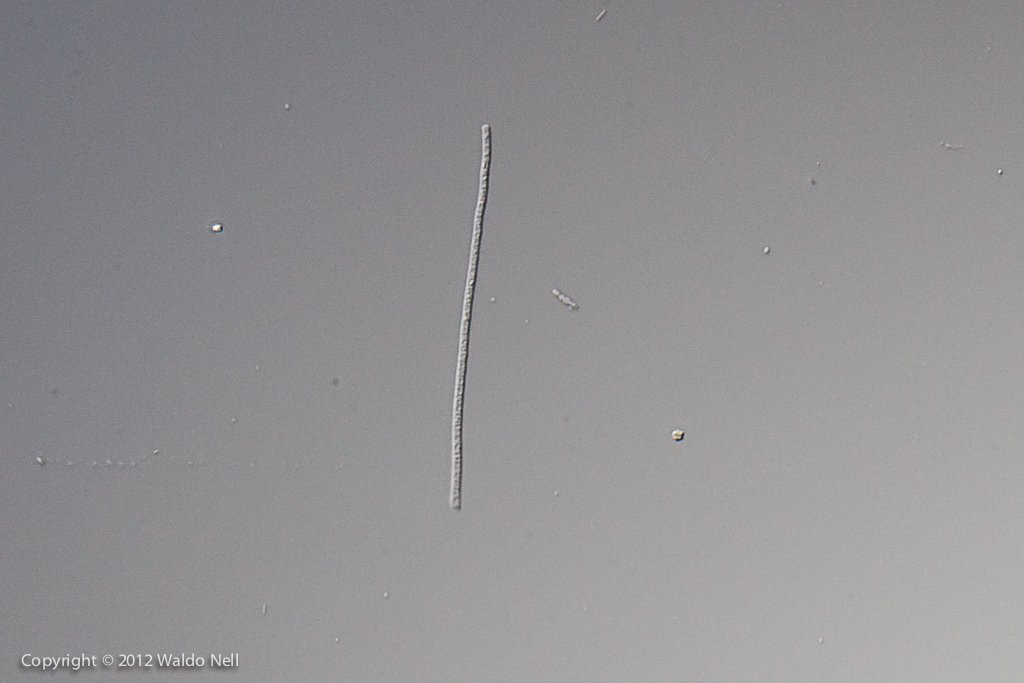
Algae (?) 40x, DIC
Seems like a strand of algae.
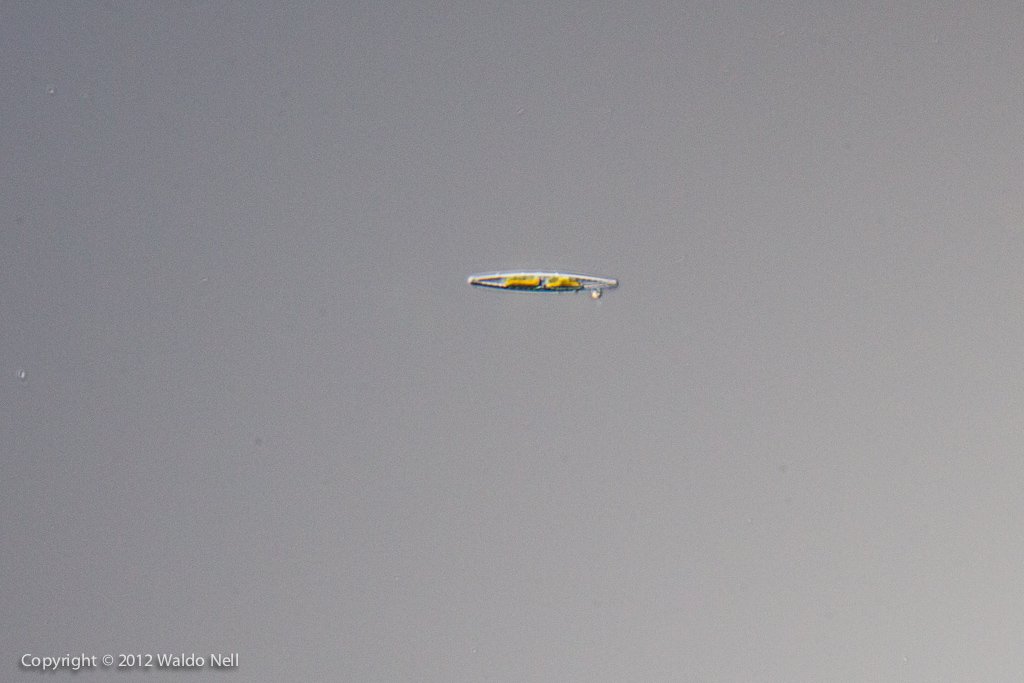
Diatom 40x, DIC
Another tiny diatom.
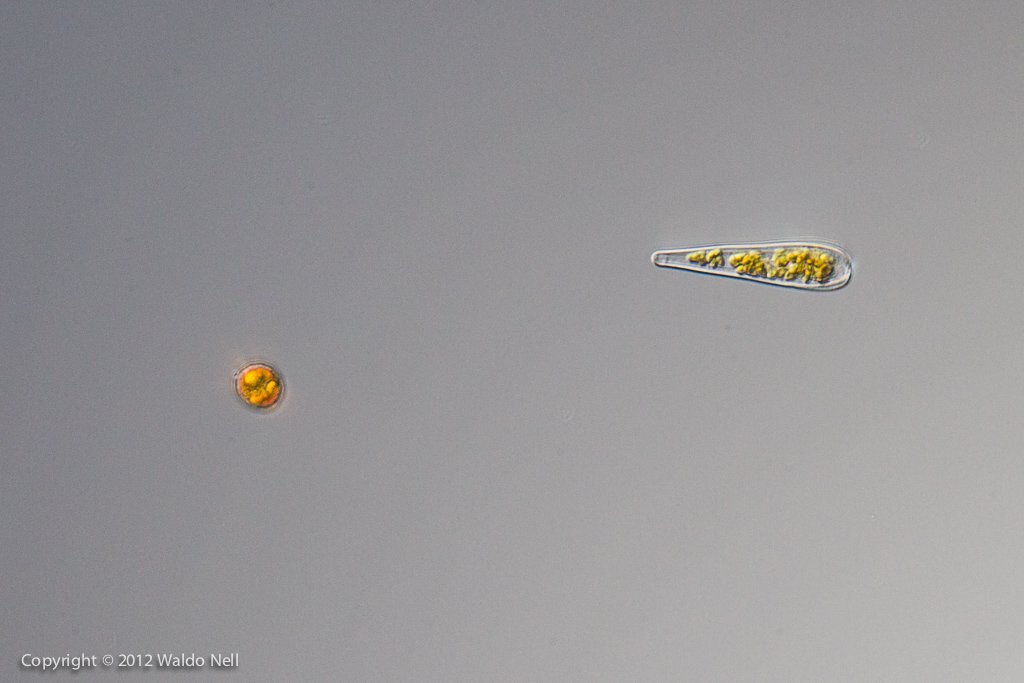
Diatom and Zooxanthellae 40x, DIC
Zooxanthellae cell (left), diatom (right).
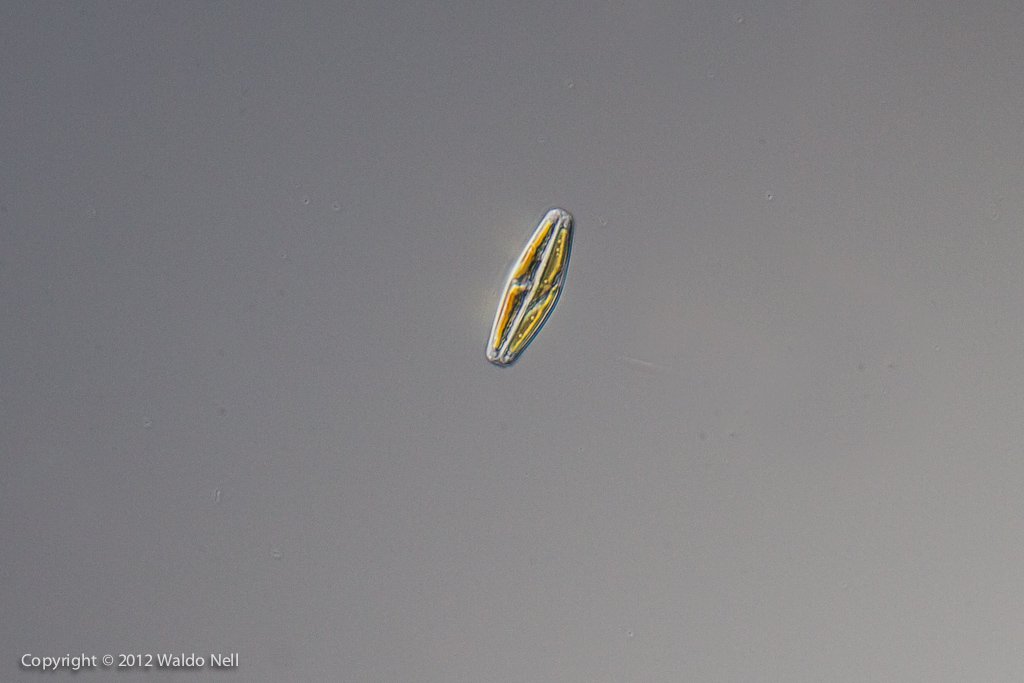
Diatom 40x, DIC
It is astounding to see the diversity of diatoms in skimmate.
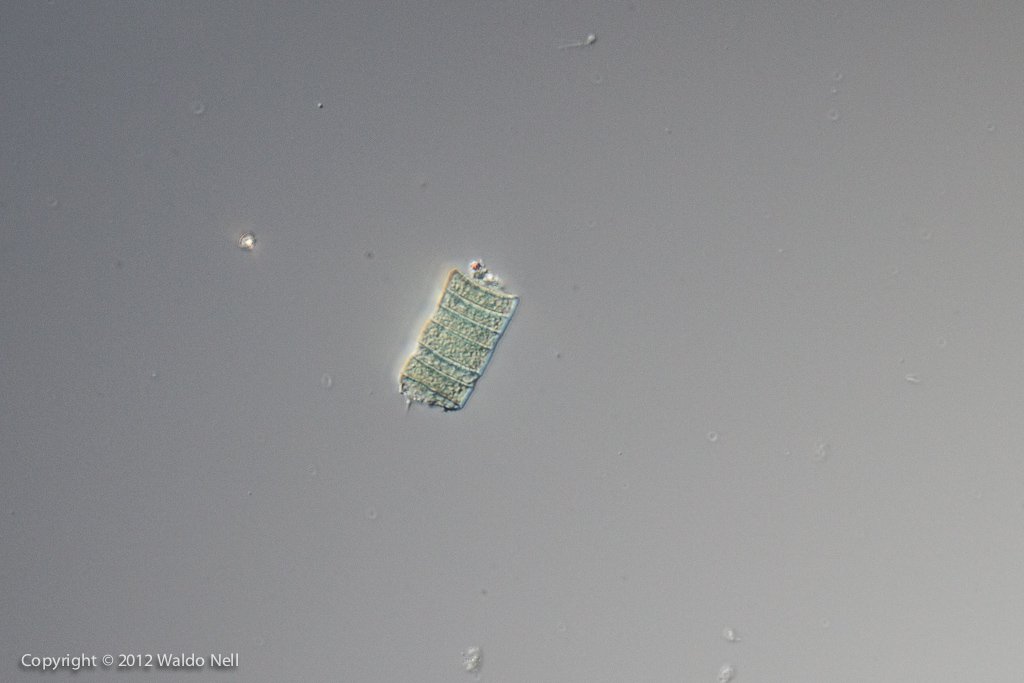
Algae 40x, DIC
Fragment of algae.
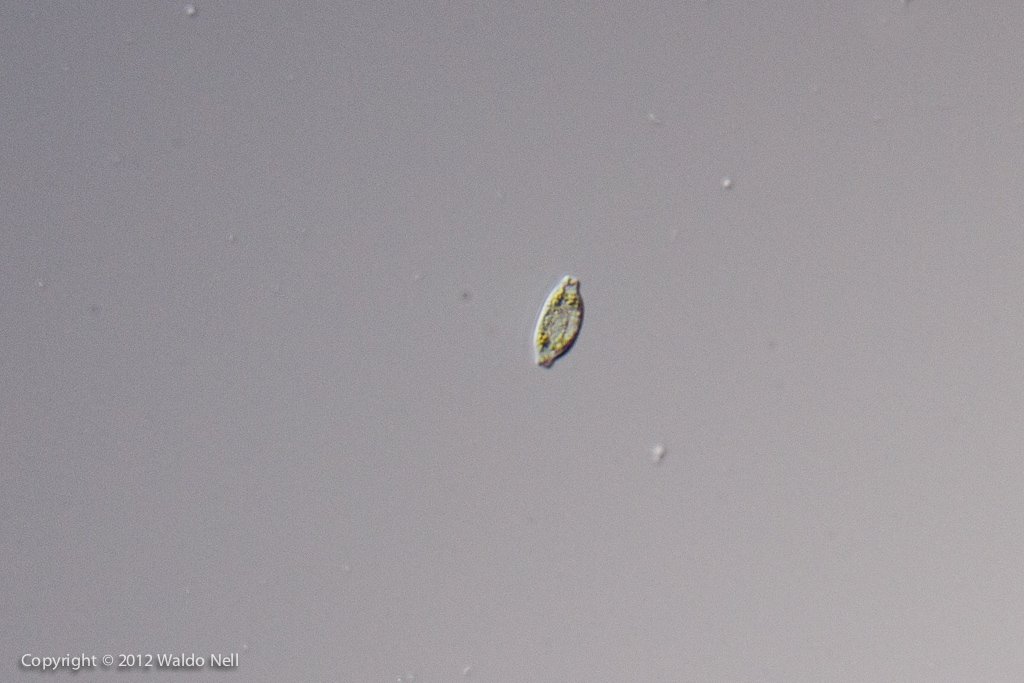
Diatom 40x, DIC
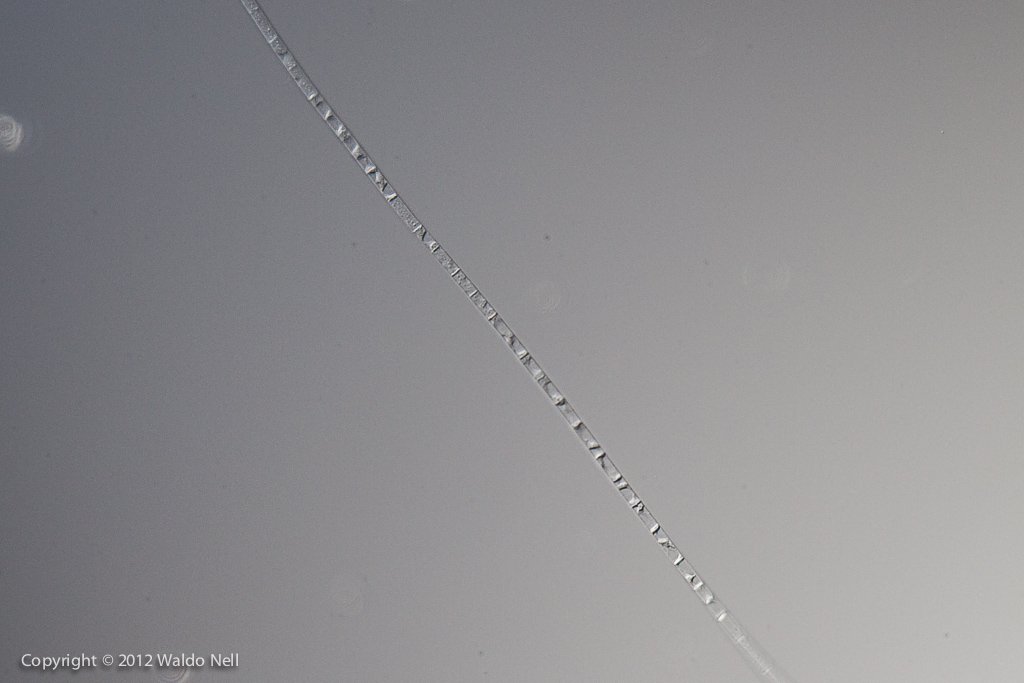
Algae 40x, DIC
Another kind of algae
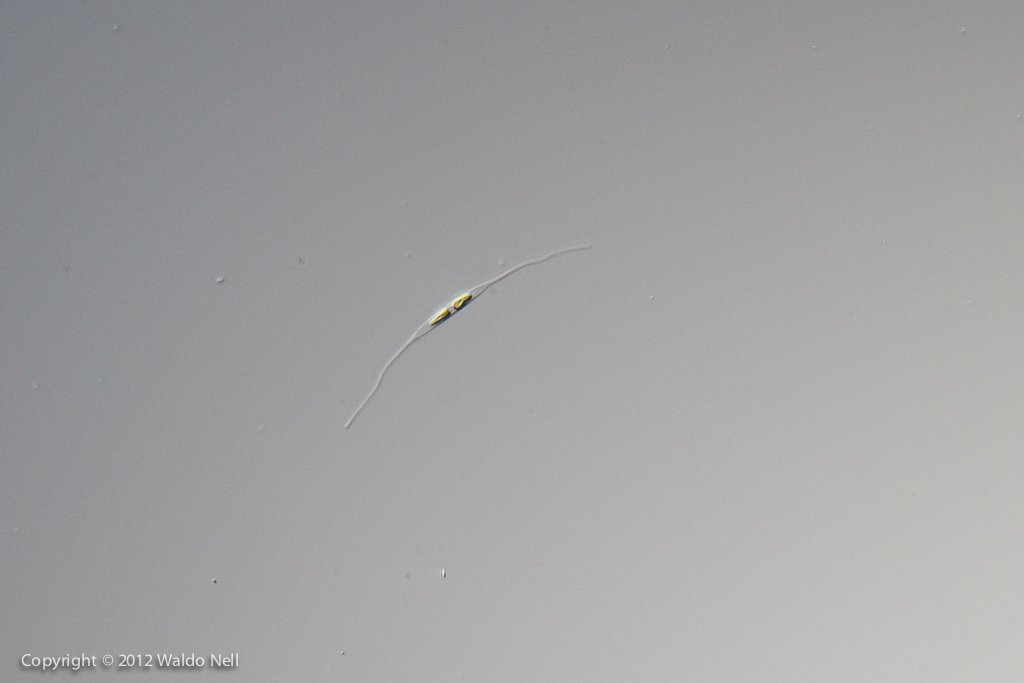
Diatom
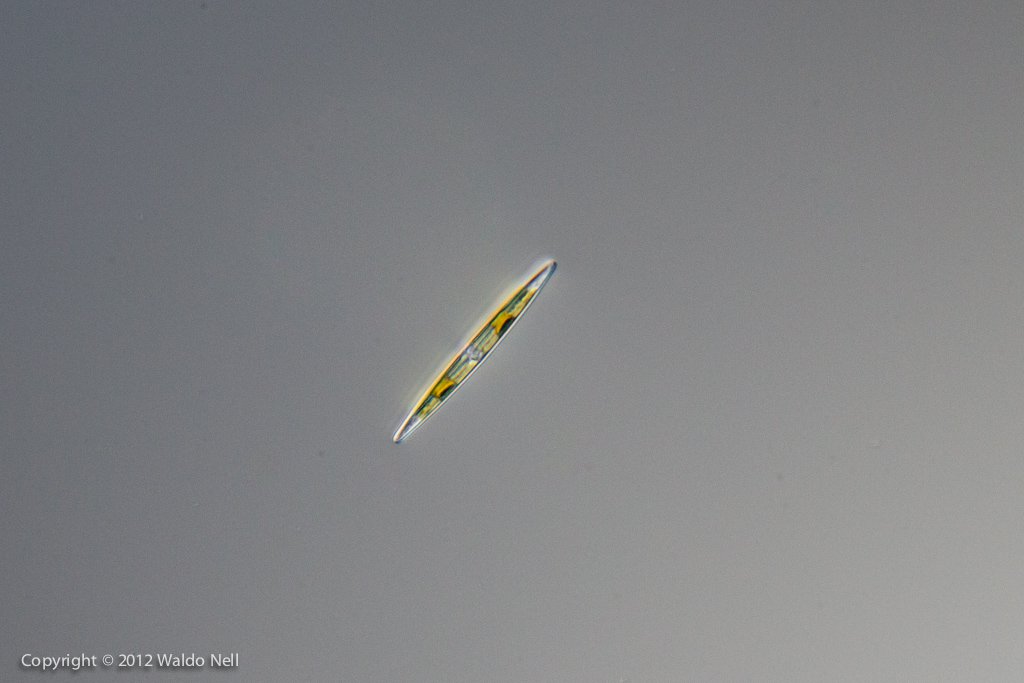
Diatom 40x, DIC
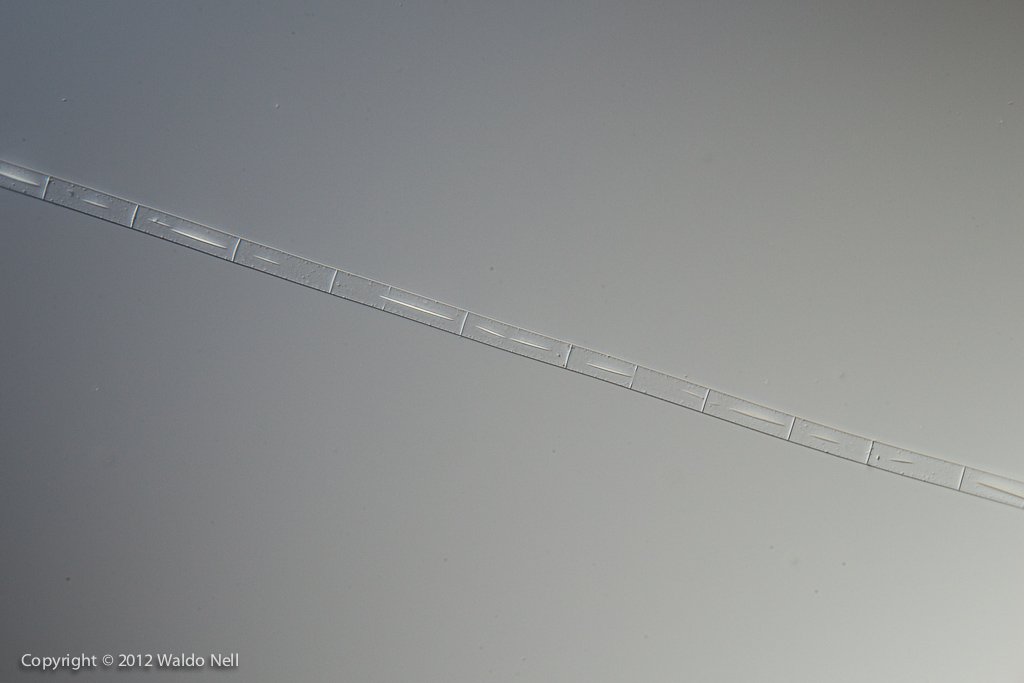
Algae 40x, DIC
Strand of algae.
Crustaceans
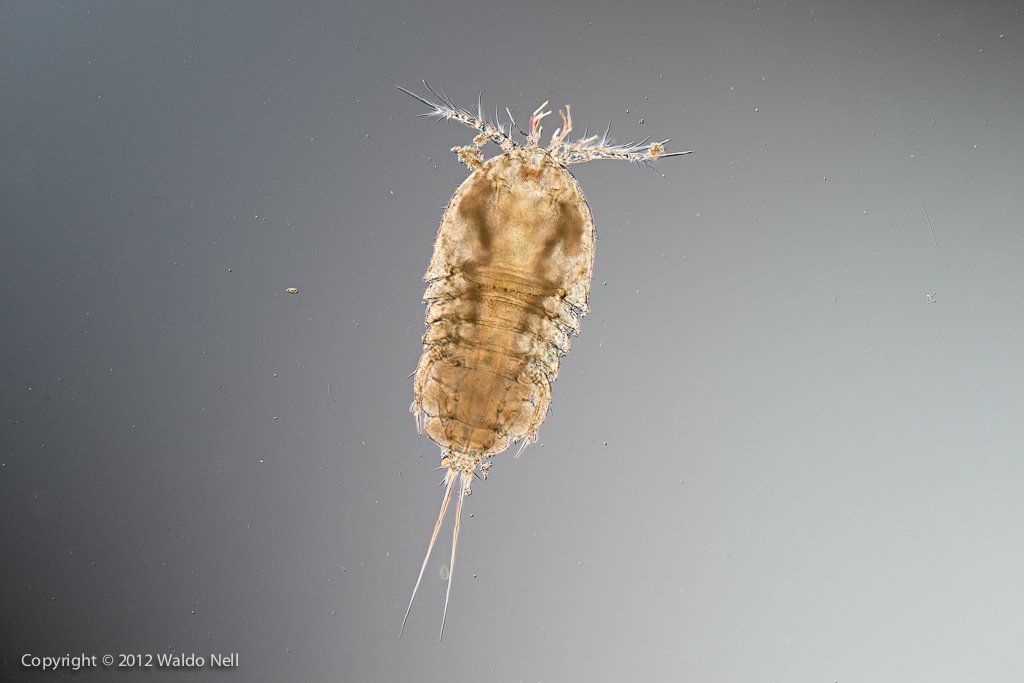
Copepod 10x * 1.25, DIC
Copepods are found everywhere as they feed on detritus.
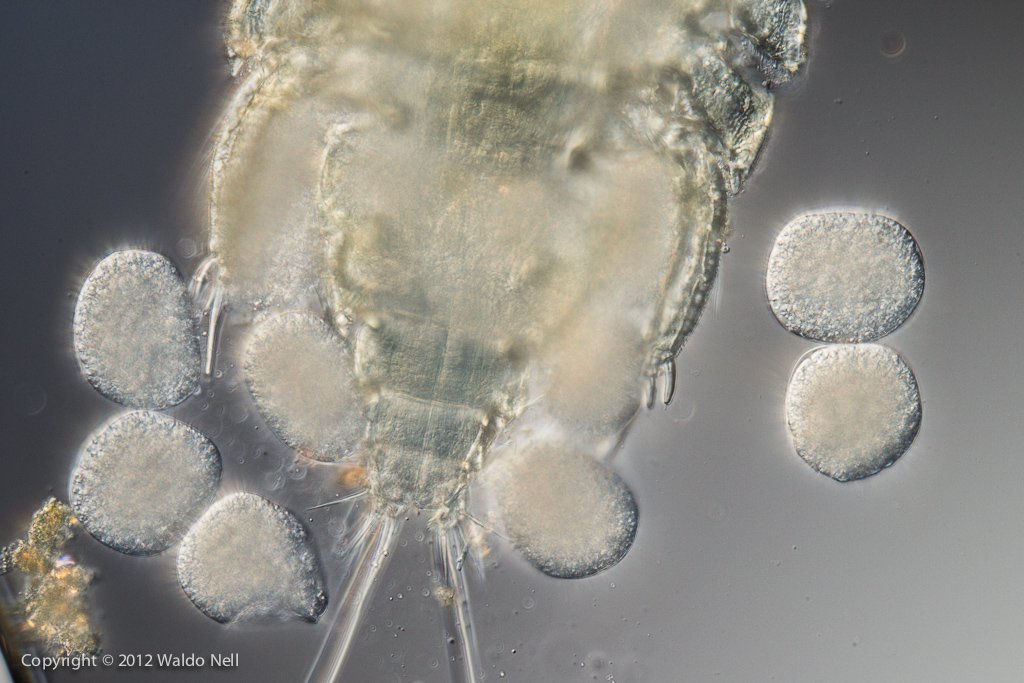
Copepod Eggs 40x, DIC
Couple of eggs that detached from the host copepod.
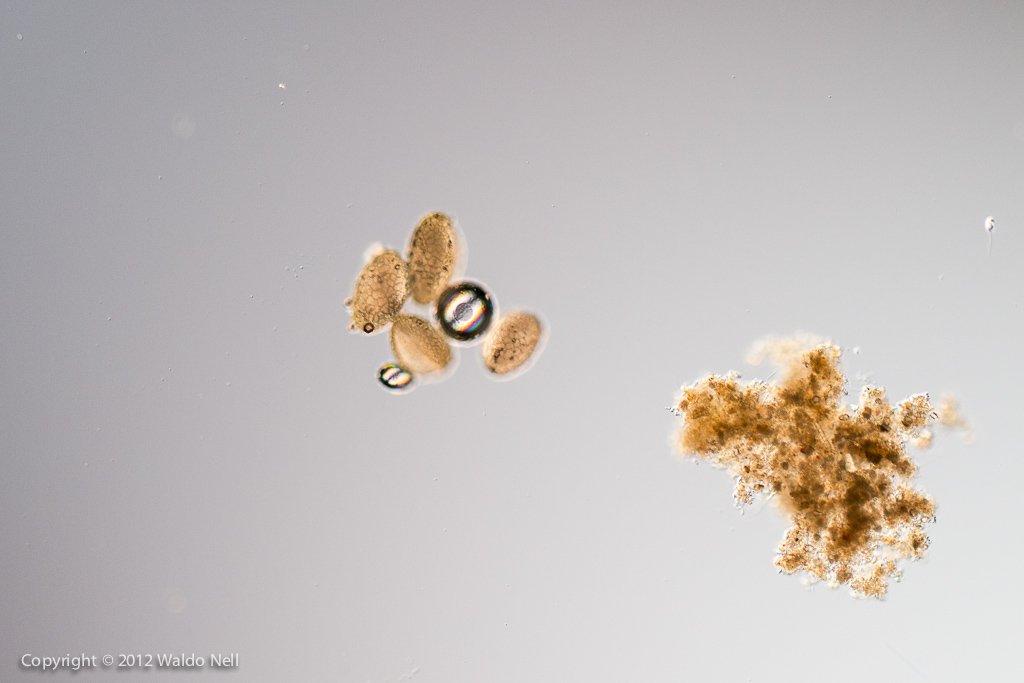
Eggs (?) 10x, DIC
Seems to be a couple of eggs of some crustacean.
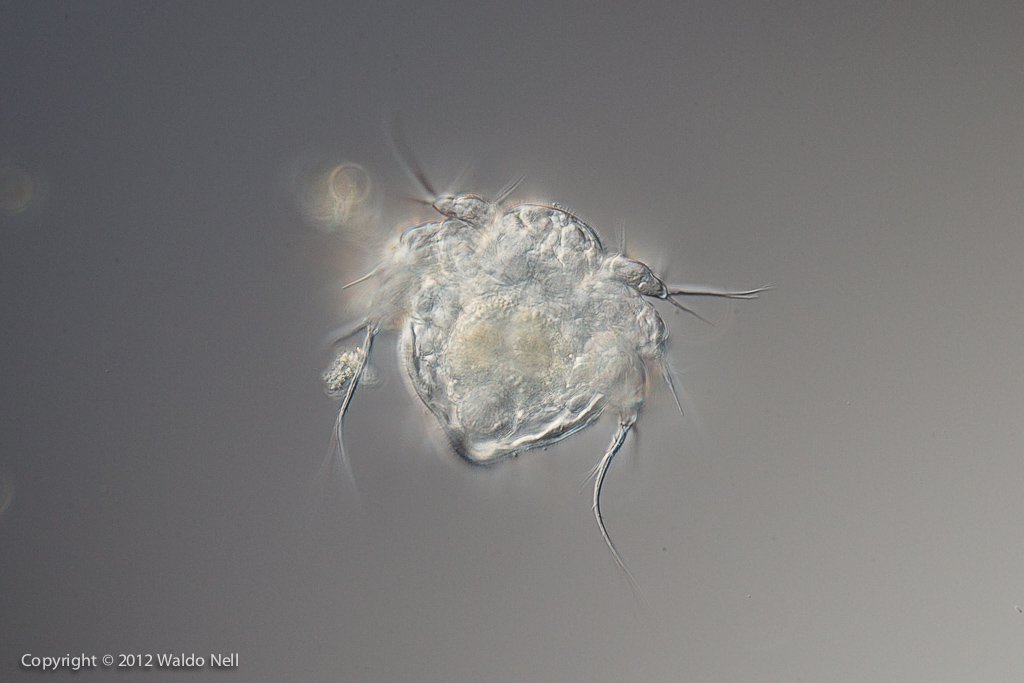
Copepod Nauplii 40x, DIC
Baby copepod.
Spicules
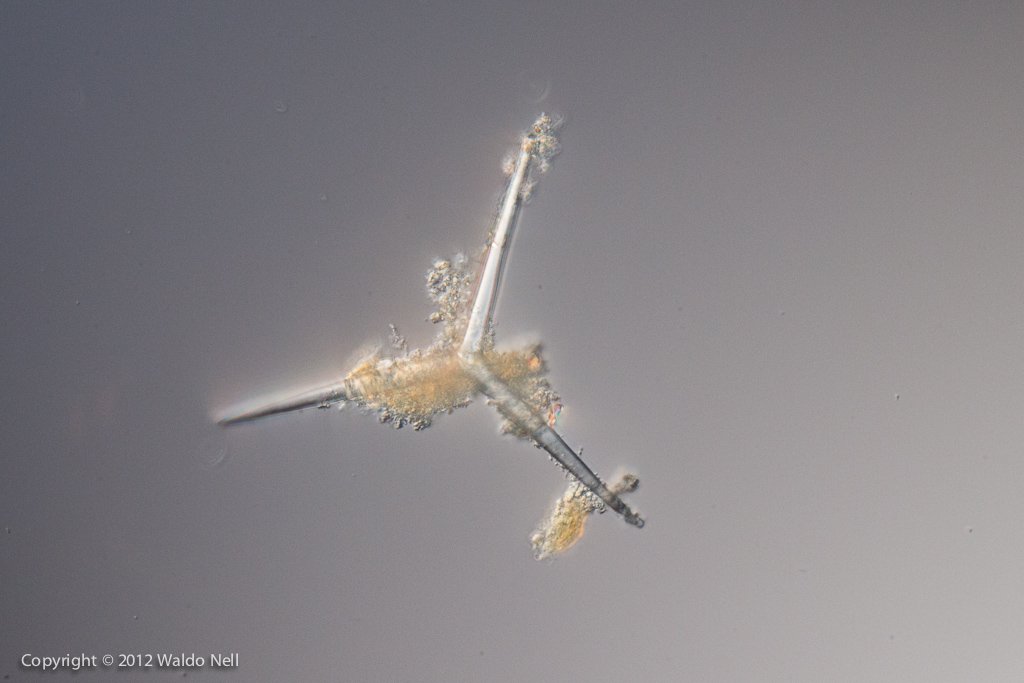
Sponge Spicule 40x, DIC
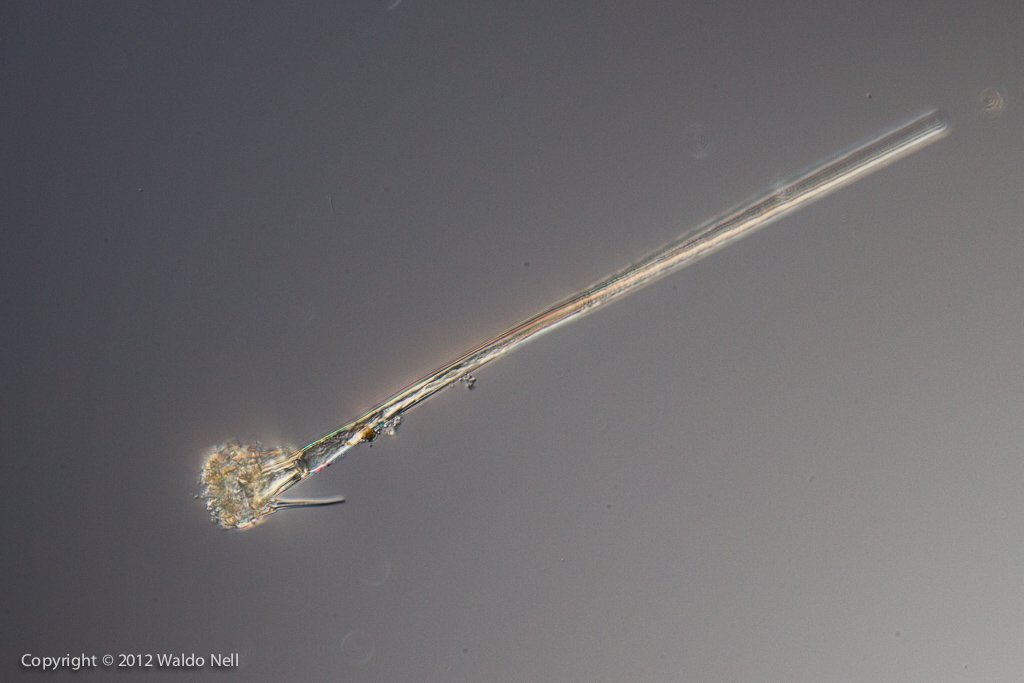
Spicule (?) 40x, DIC
Seems to be a spicule of an unknown organism.
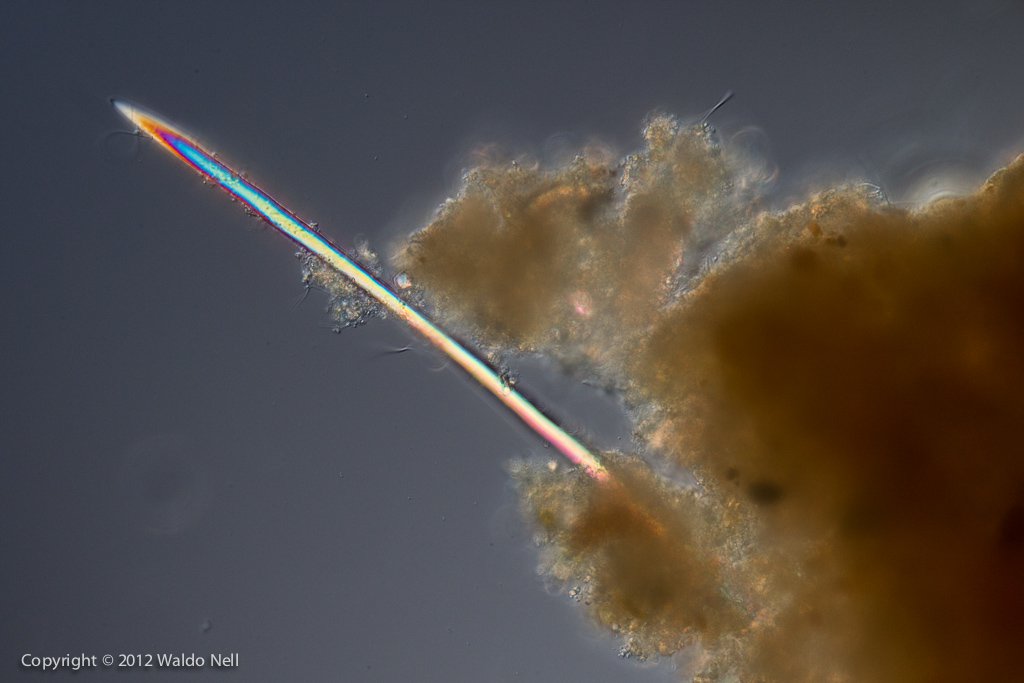
Spicule (?) 40x, DIC
Heavily polarized view of a spicule of an unknown organism, embedded in detritus.
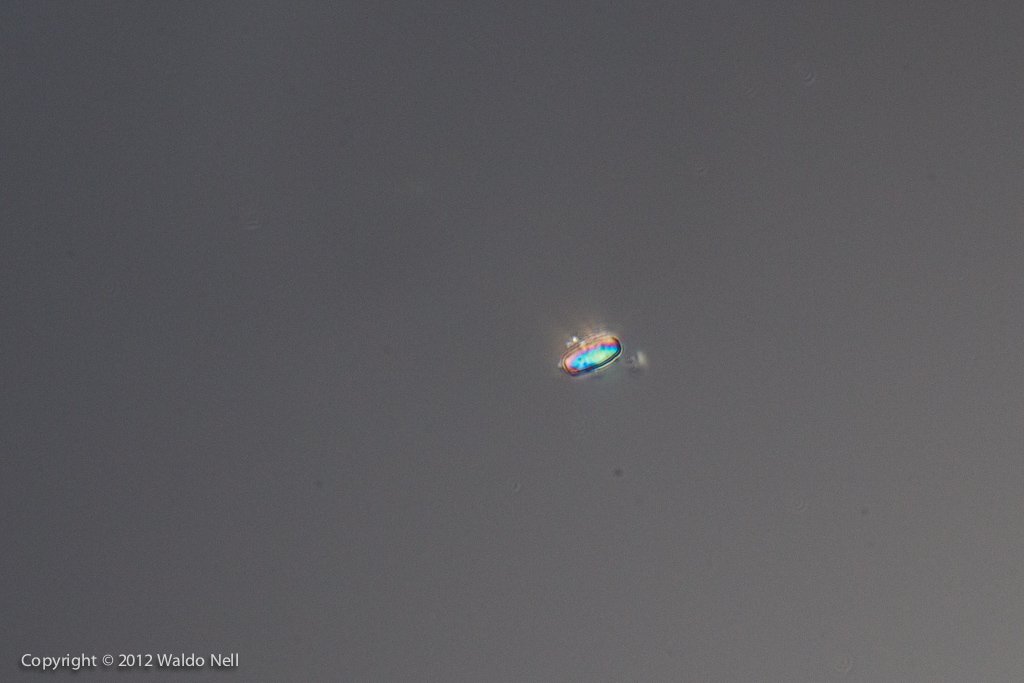
Spicule (?) 40x, DIC
Could be a tiny spicule as it seems to be mineral based.
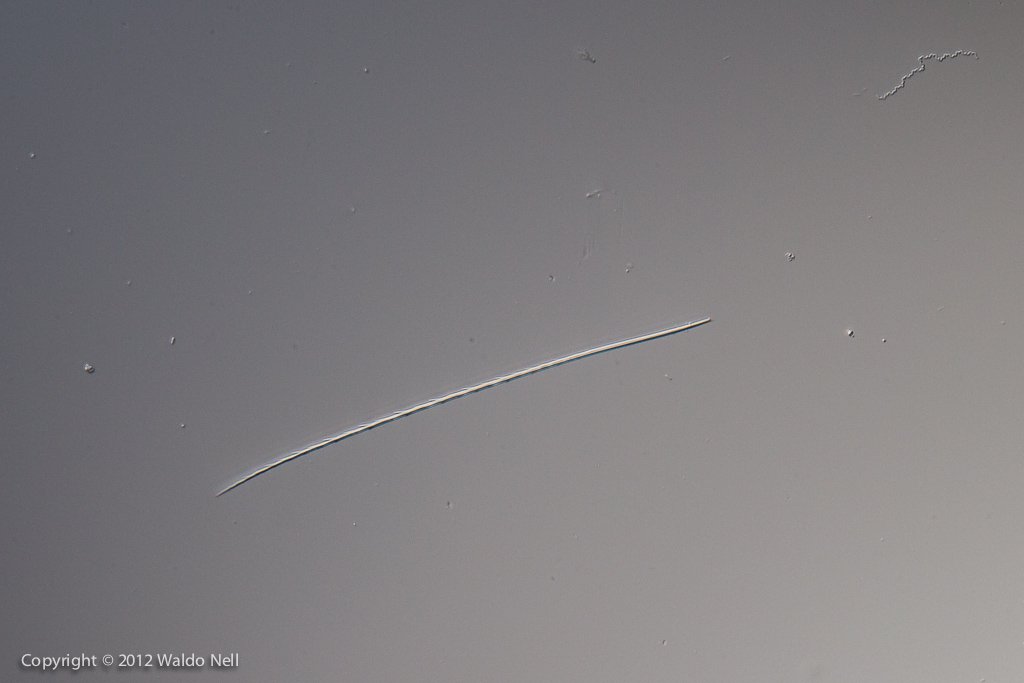
Spicule (?) 40x, DIC
This could be another spicule. It is strange as it has barbs on one side.
Worms
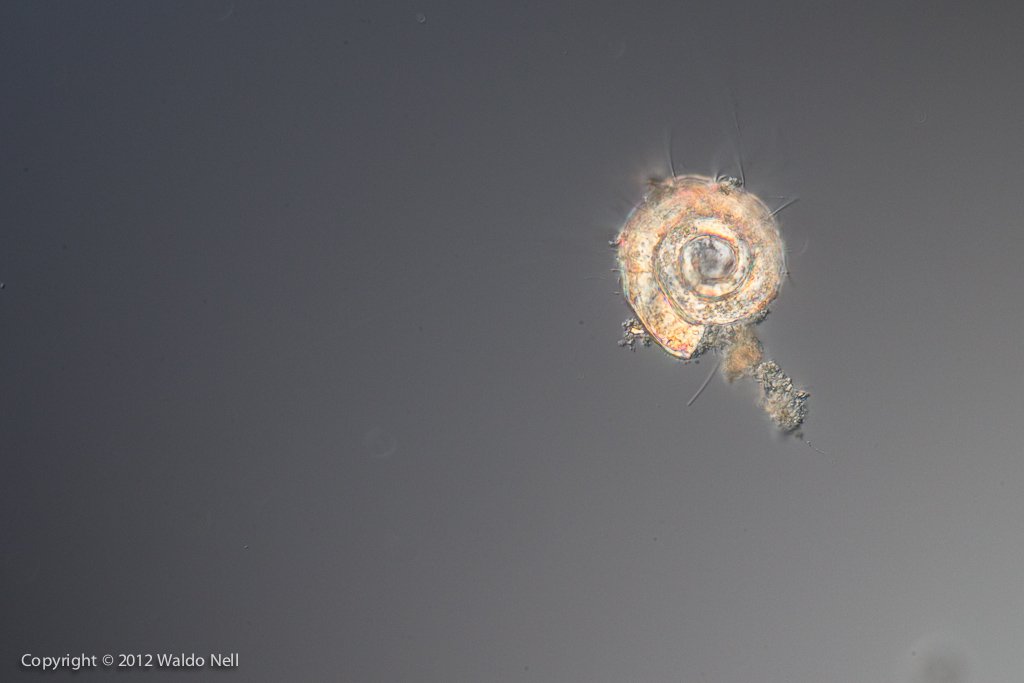
Spirorbid Worm Shell 40x, DIC
Shell of a Spirorbid worm, now overtaken by other organisms.
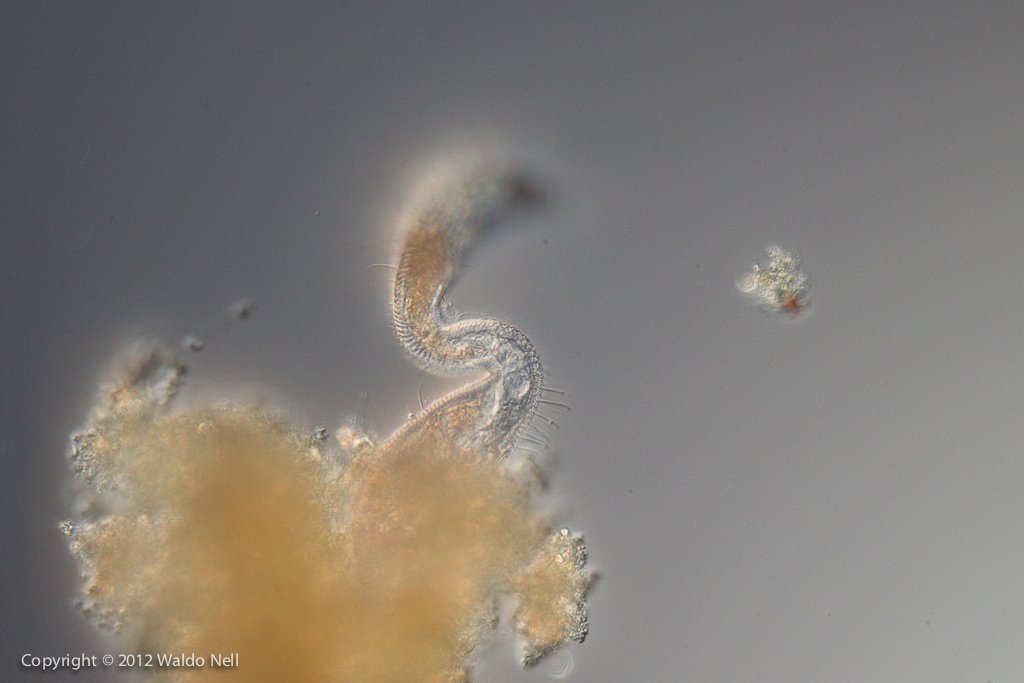
Unidentified Worm 40x, DIC
Does not look like a nematode but it sure looks like a worm.
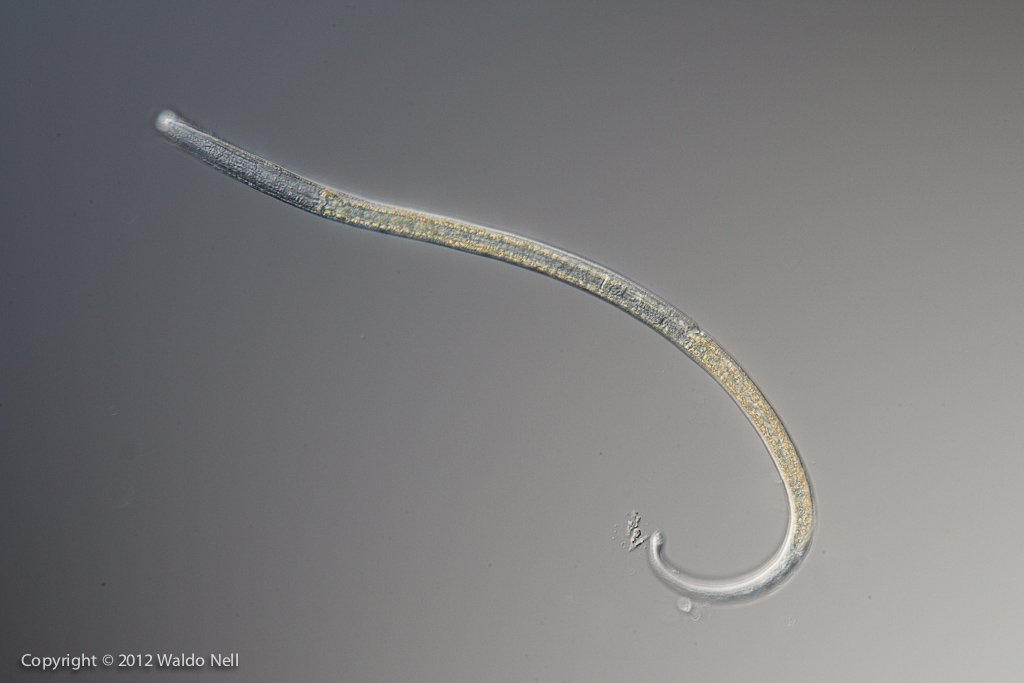
Nematode 40x, DIC
Nematodes feed on the detritus. In every fragment of detritus you can be sure to find at least one nematode.
Other
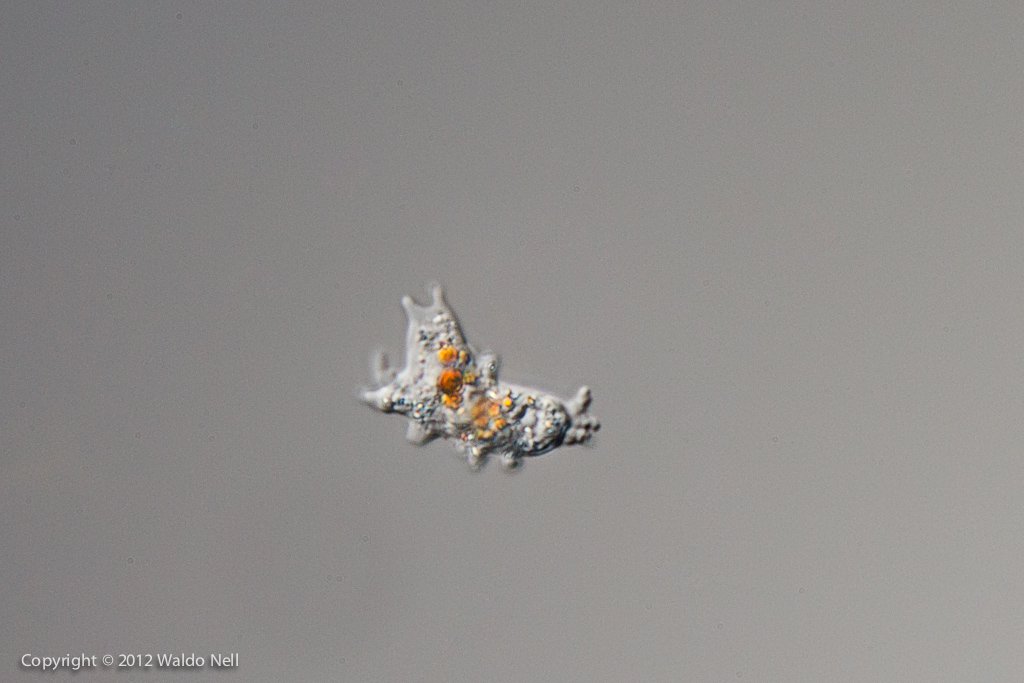
Amoeba 40x * 2, DIC
One of the most primitive of all animals, an Amoeba can take on virtually any shape. This might even be your great! grandmommy...
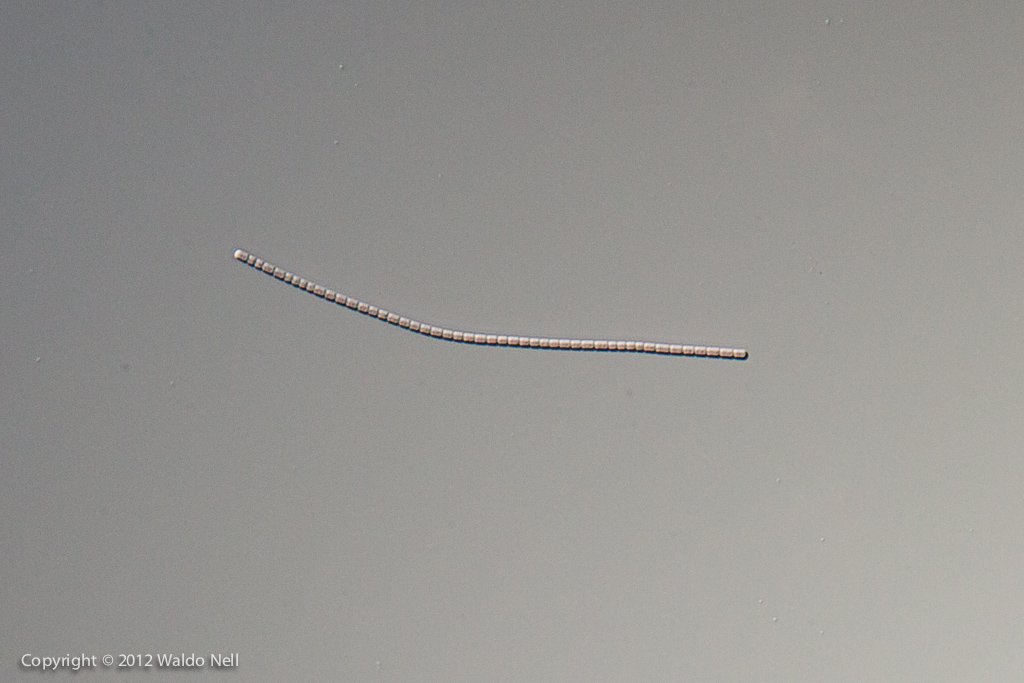
Cyanobacteria (?) 40x, DIC
This could be cyanobacteria, and if correct, then this is a kind of bacteria and not an algae as many people incorrectly believe.
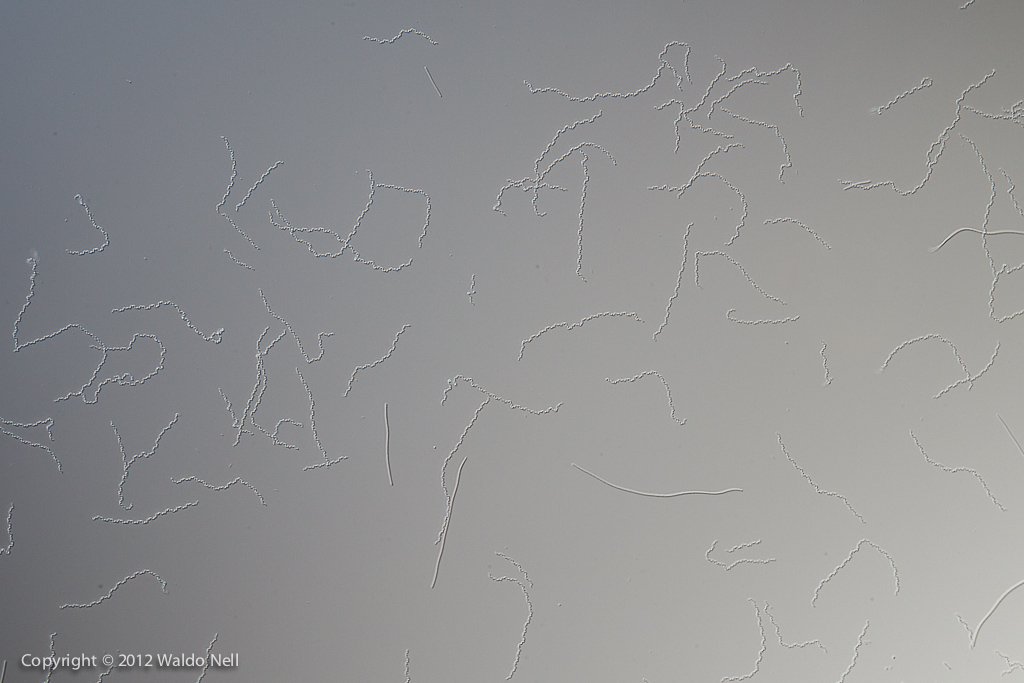
Bacteria 40x, DIC
Two different forms of bacteria can be seen here - spirillum (spiral shaped) and baccillus (rod shaped). These consume everything - from detritus, to dead crustaceans. Left long enough I believe it would consume every bit of skimmate. I do not think I would be far off by saying that by volume, these bacteria are the most numerous of everything in the skimmate sample.
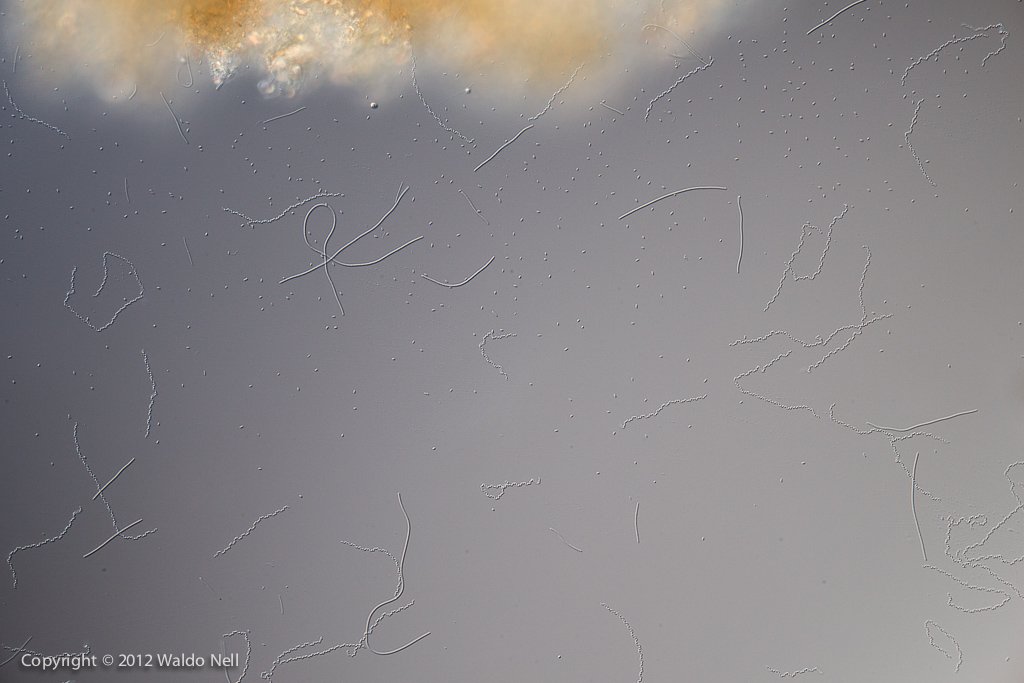
Bacteria 40x, DIC
There are potentially three distinct forms of bacteria here: spirillum, baccillus and coccus (spherical, though this could be short baccillus too). It is clear they are feeding off the detritus, breaking it down.
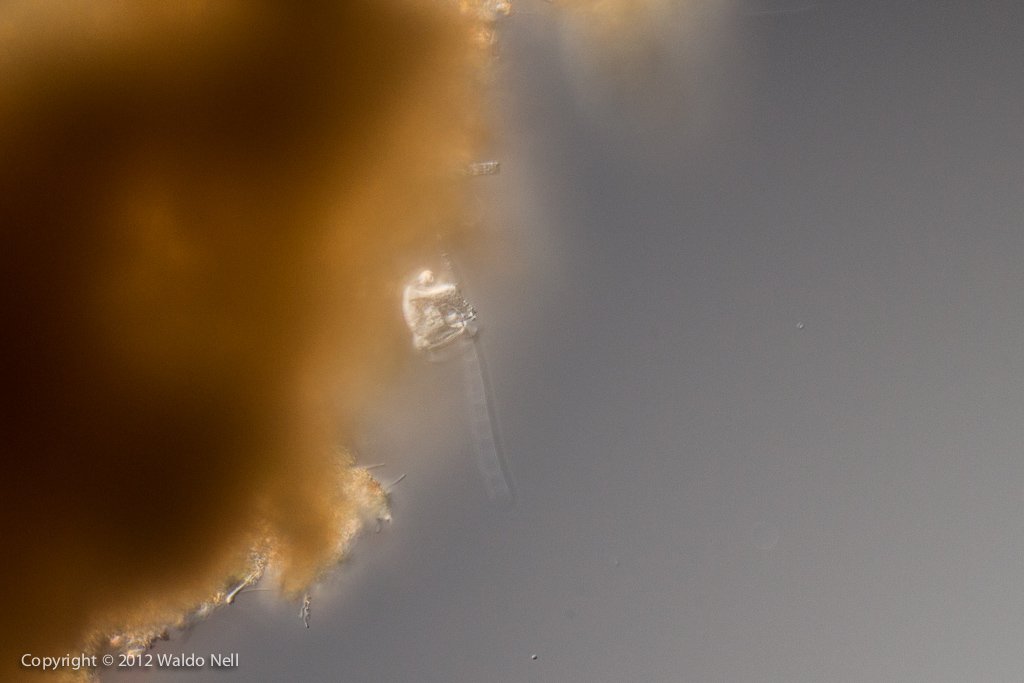
Rotifer 20x, DIC
A very bad photo of a tiny rotifer attached to a piece of detritus.
Unidentified
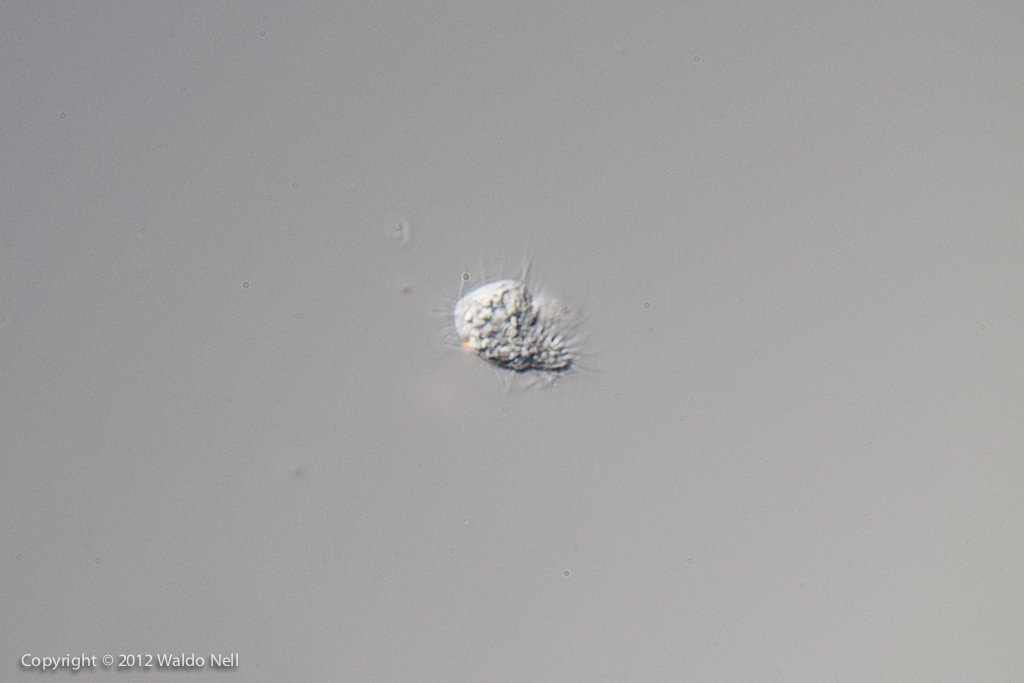
Unidentified 40x * 2, DIC
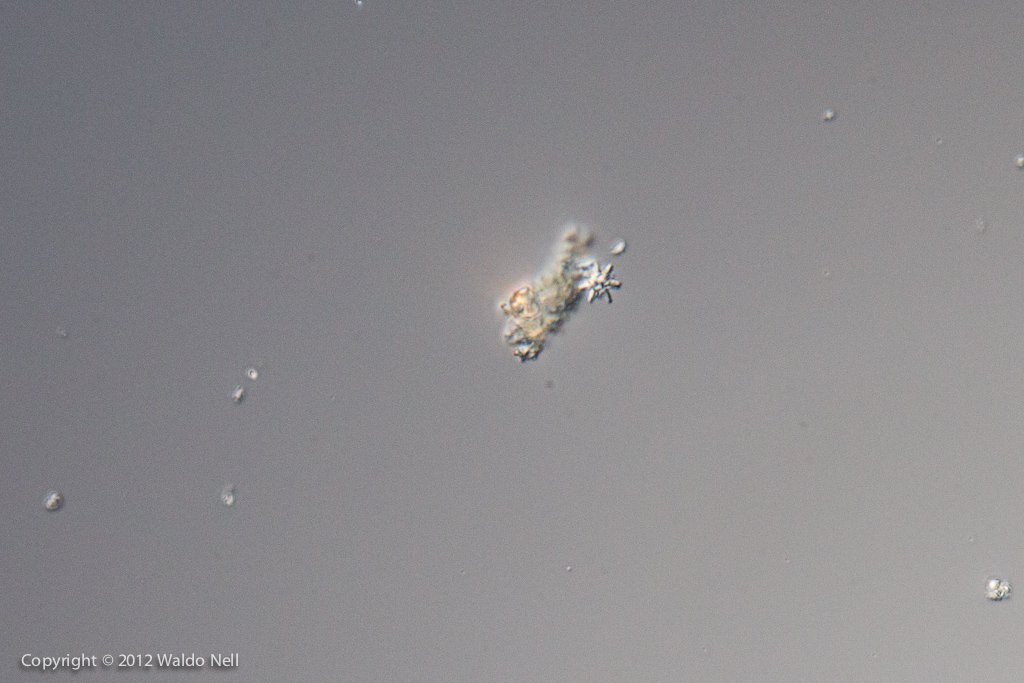
Unidentified 40x, DIC
Could be a larvae of some organism?
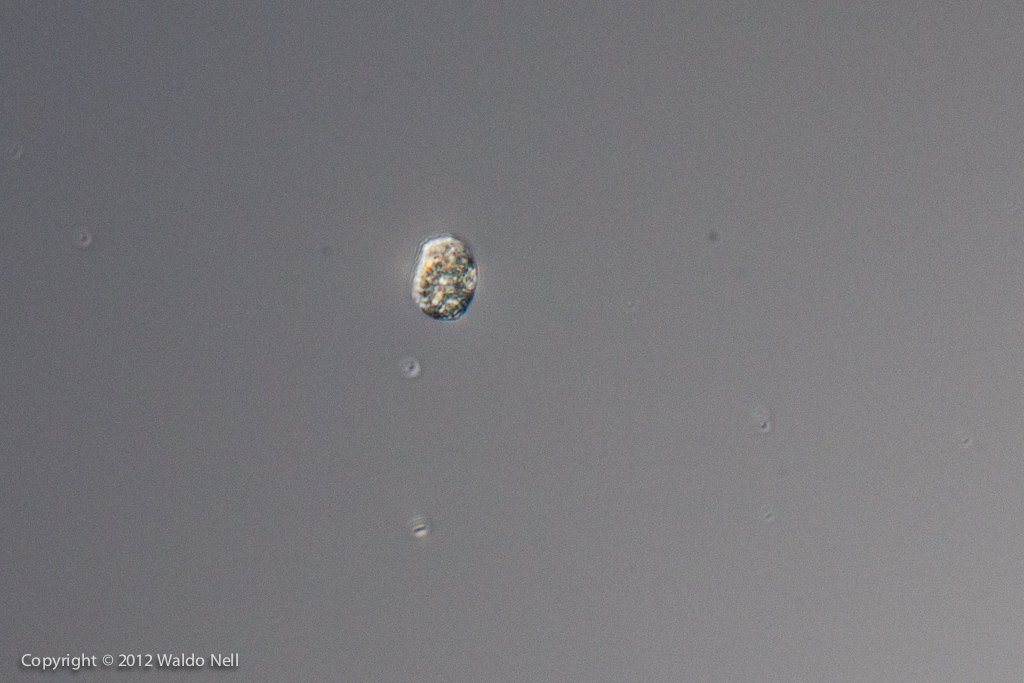
Unidentified 40x, DIC
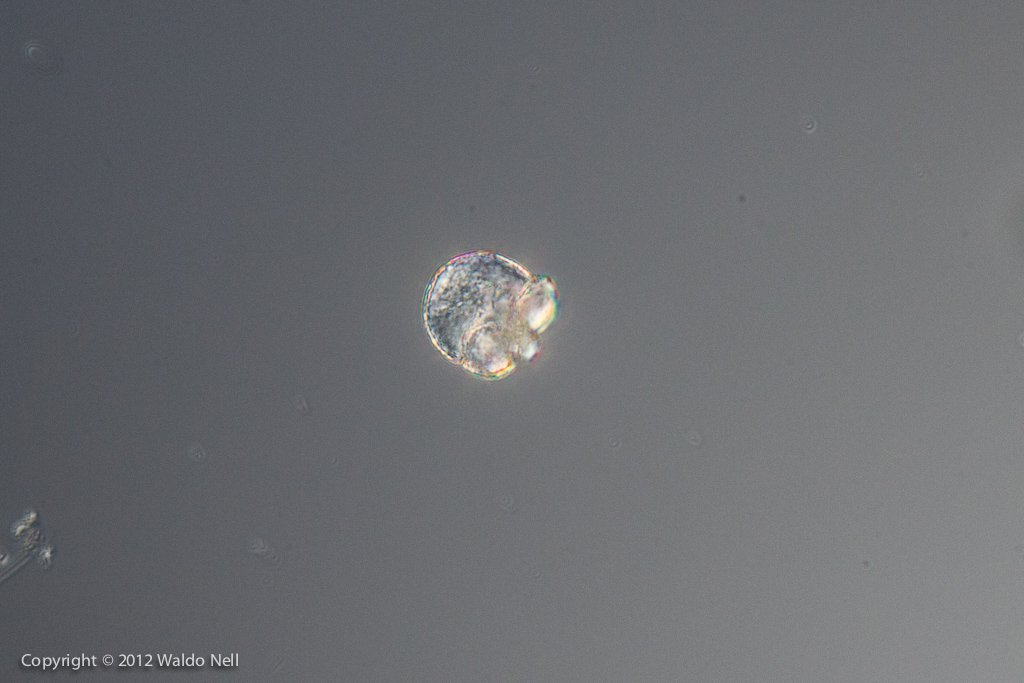
Unidentified 40x, DIC
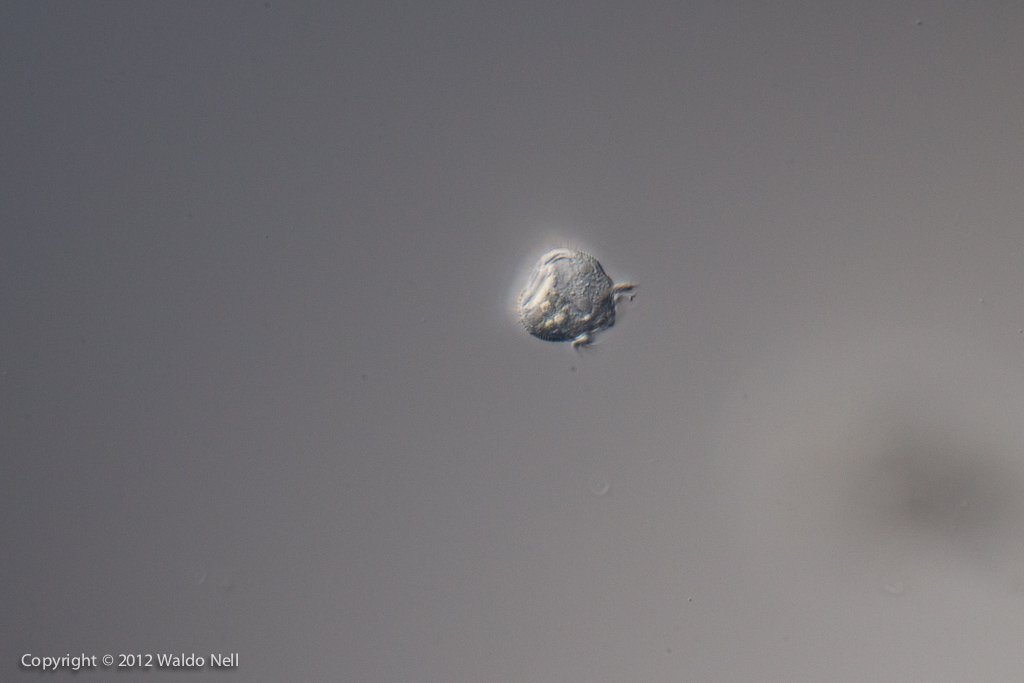
Unidentified 40x, DIC
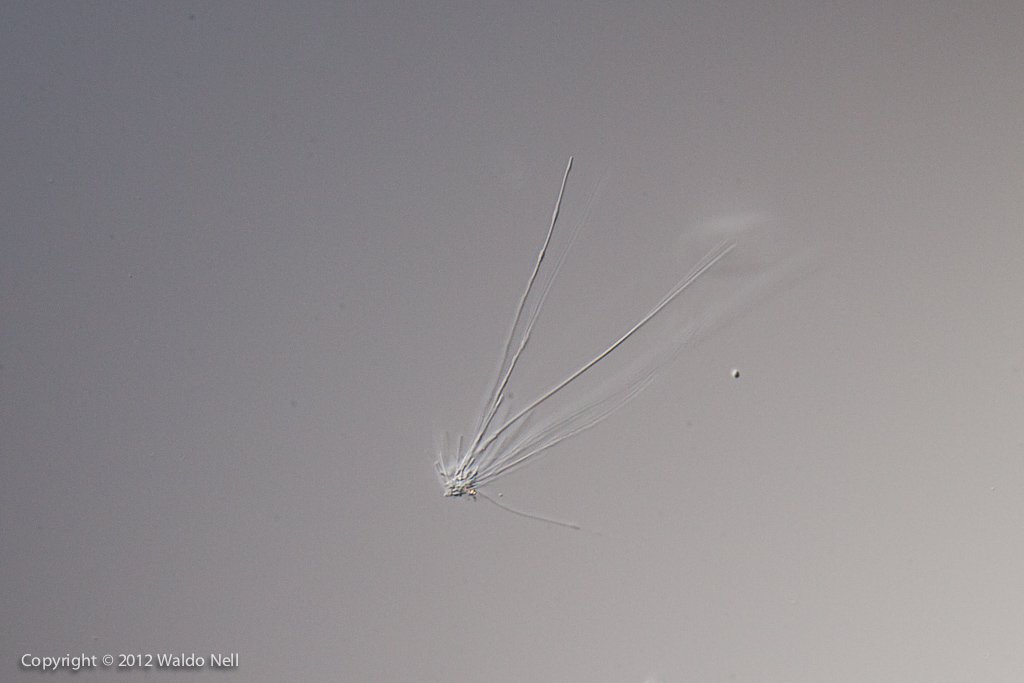
Unidentified 40x, DIC
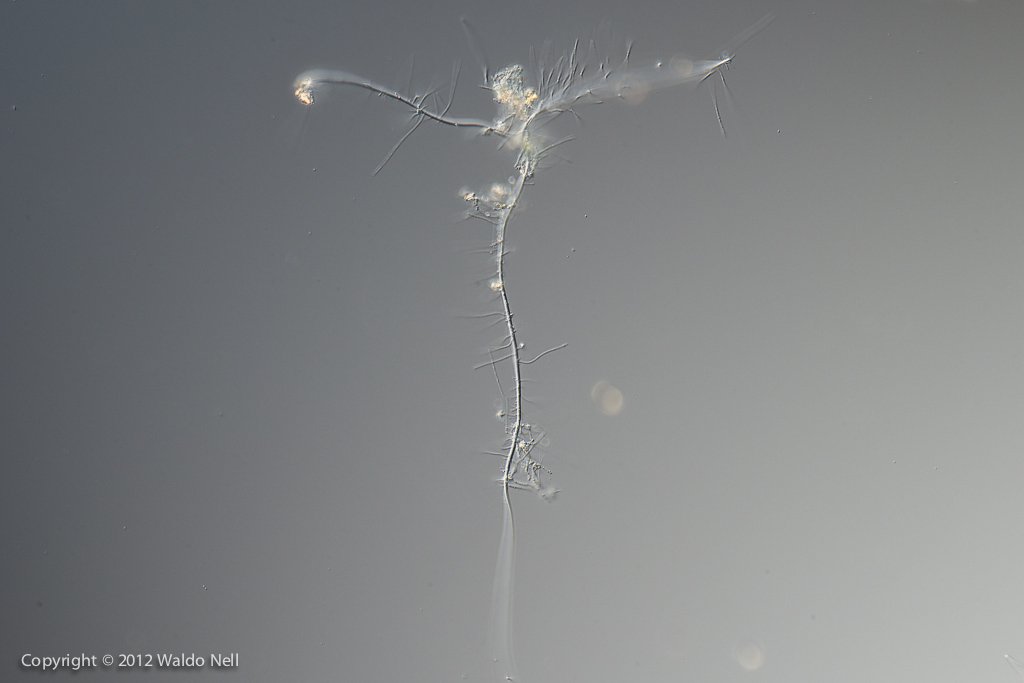
Unidentified 20x * 1.25, DIC
No idea what this is.
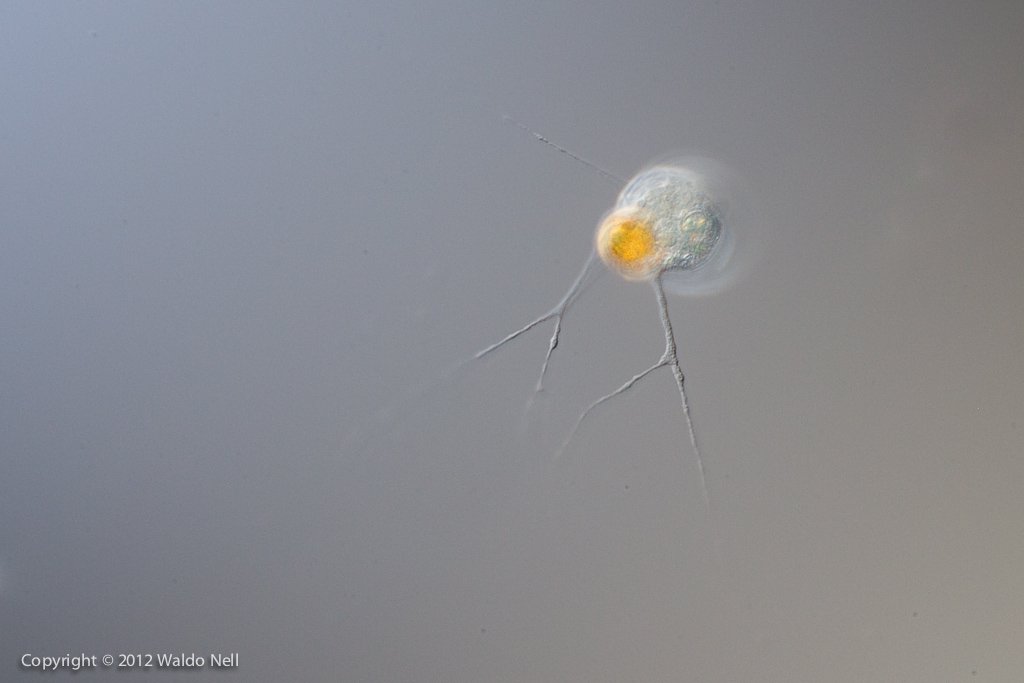
Unidentified 60x, DIC
Interesting organism that has a spherical body and long tentacles that pumps something through them.